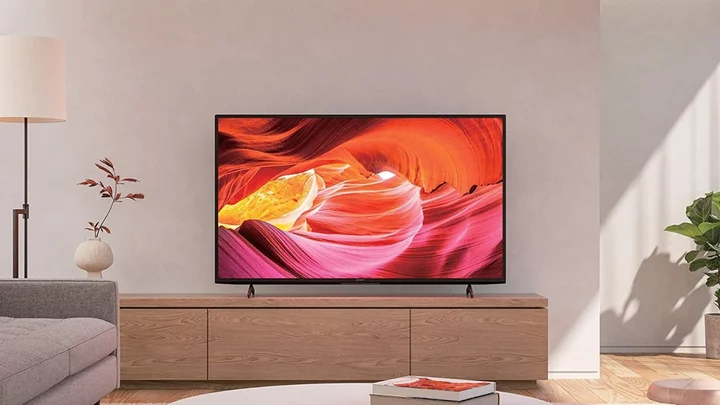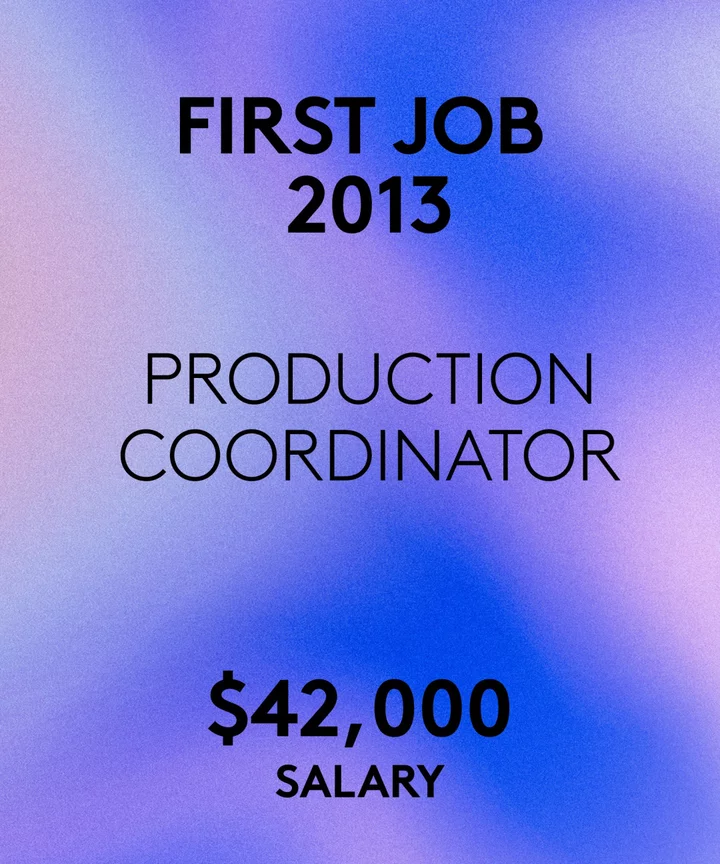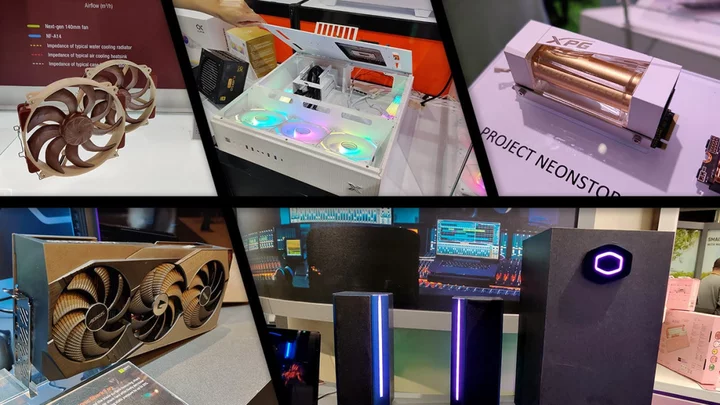For a certain set of creative professionals, Apple's MacBook Pro is the pinnacle of personal laptops. For some, it's the hardware design and usability; for others, sticking with the macOS operating system is key. And compared with its more portability-focused sibling, the MacBook Air, the MacBook Pro's performance, in its upper configurations, is hard to beat, especially with software that runs natively on its M Series processors.
But in 2023, a MacBook Pro isn't the right answer for everyone. Premium Windows laptops have come a long way in design and quality, and there are many use cases for them among power users. Those include editing photos, digital illustration, playing games, encoding and live-streaming videos, animating 3D models, running demanding computer-aided design (CAD) software, and much more.
Our list of the best MacBook Pro alternatives aims to offer an option for everyone, all of which have been tested with our gauntlet of benchmarks and anecdotal use. Below that, we include a buyer's guide for how to best emulate the MacBook Pro experience on a Windows or other alternative device.
On the most basic level, the MacBook Pro offers a premium design and deluxe build quality, slightly thicker than ultraportable laptops but more portable than most mobile workstations. Currently, Apple offers the MacBook Pro in 13-inch, 14-inch, and 16-inch screen sizes. Windows laptops have no problem matching those choices; they come in all different shapes and sizes and even surpass the Mac at 17 and 18 inches.
(Credit: Molly Flores)Smaller sizes naturally prioritize mobility but have a lower power ceiling, while the 16-inch MacBook Pro goes all in on power and performance. Read each linked MacBook Pro review for more about their specific tradeoffs.
Windows laptops offer two options MacBooks don't: touch screens and 2-in-1 convertible designs. Apple hasn't adopted touch-screen technology for any of its laptops, and it even removed the pseudo-solution Touch Bar found above the keyboards of previous models. Many if not most Windows laptops, by contrast, offer both touch and non-touch displays, and plenty are convertibles that let you fold back their screens to work in tablet mode or prop up the system like an easel for presentations.
(Credit: Molly Flores)You can find tons of 13- and 14-inch convertibles in lines like HP's Envy and Spectre, Lenovo's Yoga, and Dell's XPS and Inspiron, though hybrid designs are a bit less common among larger, more powerful laptops. Not every user will want a touch screen, either, but one can be convenient. For some creative pros, it can make or break your experience—stylus support for digital manipulation or drawing can be an enormous boon.
But back to the actual screen. Choosing a size is one part personal preference, one part how often you plan to travel with your laptop, and one part your performance needs—the 16-inch MacBook Pro can deliver power that the smaller machines cannot. If you only need modest oomph in your system and would consider a 13-inch MacBook Pro, the same size will be fine for a Windows system, and so on.
(Credit: Molly Flores)Apple laptop screens are also beautiful, high-resolution Retina Displays that can show the details and colors of photos and visual content to their best advantage. You'll want to meet this level of quality in your alternative, so look for a Windows laptop that goes beyond full HD (1,920-by-1,080-pixel) resolution.
Our reviews not only list laptops' native screen resolutions but measure their color coverage and brightness. UHD or 4K resolution (3,840 by 2,160 pixels) is increasingly popular among professional systems, as is OLED screen technology that offers more brilliant colors and higher contrast, with unbeatably dark blacks compared to more common IPS panels. A growing number of systems sport displays with 16:10 aspect ratios instead of the more common 16:9, stretching 4K to 3,840 by 2,400.
(Credit: Molly Flores)The priciest Windows content creator laptops and mobile workstations will have 4K screens at sizes as large as 17 inches (with brand-new 18-inch gaming laptops available recently). If you want to digitally draw, look for systems that combine these high resolutions or OLED technology with a touch display and pen for the best of both worlds—something that MacBooks can't give you.
The Processor Landscape: What Competes With Apple's Chips?
While users who simply enjoy macOS and the Apple aesthetic can get by with the MacBook Air, the MacBook Pro is the pick for creative pros who need superior horsepower and a creation-focused feature set. Photo and video editors, animators and virtual reality (VR) authors, music producers, and many more will benefit from top-end speed. Our picks for the best laptops for video editing are relevant here, as they delve into high-end performance and feature sets, as does our general laptop processor buying advice.
M1 and M2, Explained
Today's record-setting MacBook performance was first made possible by Apple's 2020 switch to its own M1 chips rather than Intel processors. In the summer of 2022, Apple followed this up with the release of the M2 chip in its latest revisions of the 13-inch MacBook Pro and MacBook Air.
Apple's SOC platform executes both the processing and graphics needs of the laptop, and as we've seen in testing, does so at an impressive level. The M1 architecture was the first step for all new Apple laptops and desktops, and now it and M2 processors come in a variety of power tiers.
We'll spare you too many technical details here since you're not shopping for a MacBook, but we have plenty of coverage if you'd like to learn about the architecture, the testing numbers, and whether M1 is right for you. For M2 coverage, check out our review of the M2-based MacBook Pro, and our comparison of the differences between M1 and M2.
M2 Pro and Max variants (along the same lines as the M1 Pro and M1 Max) launched in early 2023; see our review of the 16-Inch MacBook Pro for insights into the M2 Max's performance. Additionally, while M2 MacBooks are the latest iterations, M1 chips remain relevant enough for now—the M1 MacBook Air is arguably still a fine deal, while you'll have to seek refurbished M1 Pro and M1 Max laptops, as Apple has moved on to the M2. These are what you'll need to judge your Windows options against.
The shift to its own silicon was a big one, but the move has paid off for Apple, giving the company more flexibility and letting it optimize its hardware and software for one another. To keep up, you'll want to find an equally fast AMD or Intel solution for your new Windows laptop. As we said, 13- and 14-inch models have lower power ceilings, while 15- through 17-inch systems tend to be the workhorses.
(Credit: Kyle Cobian)AMD and Intel CPU Alternatives
In the Windows world, Intel's Core processors have ruled the roost for a long time, but AMD has made a roaring comeback in recent years. Its Ryzen chips are particularly proficient at media editing workloads.
Among 13- and 14-inch laptops for creative pros, your Intel and AMD options will generally be Core i7 and Ryzen 7 processors respectively. Some base models may come with Core i5 or Ryzen 5 chips, which are fine for day-to-day productivity but generally below the level of power favored for pro-grade work.
Laptops 15 inches and up will either use Core i7 and Ryzen 7 chips or ascend to the blistering Core i9 and Ryzen 9 tier. This is where true workstation-grade performance lies, and are the chips you'd put up against the best the M Series chips the MacBook Pro has to offer.
Bottom line: If you’re seeking a do-it-all mobile workstation as an alternative to the 16-inch MacBook Pro, go for a Ryzen 9 or Core i9. If you can work with something more modest, Core i7 and Ryzen 7 will get the job done and are your best bet for alternatives to the 13-inch MacBook Pro.
Note that many of the laptops here employ Intel 13th Gen and AMD Ryzen 7000 series processors, the latest generation from each major chip maker, with a couple of holdover 12th Generation chips hanging on in our rankings. Most of these new processors run large core and thread counts, with the best of them featuring as many as 20 cores (supporting 28 threads) at the Core i7 level, and 24 cores (with 32 threads) at the Core i9. This makes past generations look downright slow in comparison.
There's far more to modern processors than raw core count, though. Exactly why involves more details than we have space for here, but given the complex microarchitectures and synergies chipmakers are developing nowadays, comparisons based on paper specifications aren't as useful as they used to be. Read the performance-testing sections in our individual laptop reviews to see how they stack up to one another. Also, check out our deep-dive explainer to choosing among today's laptop processors.
Dedicated Graphics: Assessing the Laptop's GPU
For many creative workloads listed here (editing video, encoding, streaming, modeling, animating, and more), a powerful GPU is key. Discrete laptop graphics processing units aren't quite as fast as the equivalent graphics cards of the top gaming desktops, but modern mobile GPUs still pack plenty of power.
Note that not every creative professional needs a laptop with a discrete GPU. If your work is more processing- or data-intensive than visual, put less of your budget toward a strong GPU and more into the processor and memory. A notebook with integrated graphics might suffice for your needs, or at least an entry-level GPU rather than a pricey one.
While the advent of the "M" architecture means MacBooks no longer employ a dedicated GPU from Nvidia or AMD alongside the processor, with a Windows laptop, if you opt for a discrete GPU, you'll get one from one of those two graphics giants. Despite some inroads by AMD and early efforts by Intel, Nvidia is much the dominant player with its GeForce (consumer and gaming) and RTX A series (workstation, formerly known as Quadro) GPU lines. We just don't see as many laptops with AMD GPUs.
(Credit: Molly Flores)Nvidia's GeForce and A series both use the RTX moniker to denote the company's advanced, ray-tracing-capable GPUs. The Quadro and A series GPUs excel at CGI rendering and CAD applications for animators, VFX pros, engineers, and others who work in visual production and modeling. Even so, you'll probably find more GeForce GPUs in our recommended laptops, as they're popular for content creation as well as gaming.
The most common GPUs you'll see are the previous-generation Nvidia GeForce RTX 3050 (still around as an entry-level option for now) and the current-generation (and increasingly popular) RTX 4050 and RTX 4060 for moderate workloads. At the high end, you have the RTX 4070, 4080, and 4090 as performance leaders, topping Apple's chip family.
A small caveat here is that Intel's Iris Xe integrated graphics are relatively close to the 13-inch MacBook Pro's more modest graphics capabilities. You may find a couple of our picks that rely on integrated graphics, but only among smaller laptops for less visually demanding workloads.
Memory, Storage, and Connectivity
Rounding out a laptop's internal specs are its memory and storage. Fortunately, this is one area where you don't need to do much work to translate from Mac-land: All systems operate within the same rule, the more the merrier. More storage gives you more room to save big media files and projects, and more RAM helps your computer run more tasks at once.
(Credit: Molly Flores)The minimum you should look for in a professional laptop today is 16GB of memory. Even many general-use consumer notebooks come with 16GB rather than 8GB of RAM these days while demanding workloads like video editing can benefit from 32GB or more. Many professional creators wouldn't be caught dead with less than 32GB, while the toughest workstation customers may opt for 64GB or even 128GB. As for storage, look for at least a 1TB solid-state drive and seriously consider 2TB or more if you work with 4K video or other space-hogging files.
Next up, ports. The average user can get by just fine with a couple of USB connections, but it's different for creative pros. For one, USB-C has become the standard for slim laptops, and it's even more important for people moving large files around—USB-C and Thunderbolt data transfer speeds make a notable difference. Most content creator laptops, including the MacBook Pro, have Thunderbolt 3 or 4 ports with USB-C connectors. Larger models will also likely provide USB Type-A ports.
(Credit: Molly Flores)For content creators, it's not just about USB, though. You can buy USB-based monitors or plug a DisplayPort monitor into a Thunderbolt port with an adapter, but many prefer dedicated video-out ports with either HDMI or DisplayPort connectors. SD card slots are also prized by some users, particularly photographers who need to move images between their cameras and laptops.
How Much Should You Expect to Spend?
As a general rule, professional-grade laptops are pricey. Smaller, less powerful machines have lower starting points, but you'll likely need to scale up some components or features to satisfy your needs.
Apple's 13-inch MacBook Pro starts at $1,299. That's not particularly steep, and you can readily find Windows laptops at or below that mark, but the larger MacBook Pros represent a higher power tier and have prices to match. The 14-inch model starts at $1,999, and the 16-inch MacBook Pro at $2,499.
Since there are so many options from so many manufacturers, Windows laptops will fall in and around all of those price points. As mentioned, some are more configurable or customizable at the time of order than Apple's machines, so you can scale the price to your needs and budget.
Apple computers have a reputation for carrying a price premium, but the truth is that elite Windows laptops aren't cheap, either. Pure value becomes less of a factor with these laptops than performance, capacity, and display quality, and it's easy to push a loaded MacBook Pro or Windows mobile workstation past $4,000.
Which MacBook Pro Alternative Should You Buy?
With the key criteria covered, we've selected our top picks among worthy alternatives to the MacBook Pro. Whether you're facing a corporate switch from macOS to Windows, merely considering the jump for the sake of particular software, or making your first professional laptop pick, one of these options will surely suit your needs. Some are thin-and-light rivals to the 13-inch MacBook Pro, while others are closer to professional workstations like the 16-inch model. All of them hit at least the minimum specifications and feature requirements described above, and most can take you as high as you want to go.









